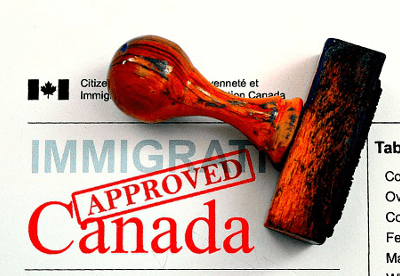Move to Canada from the United States | Immigration, Work, and Study Visa Options
Over 10,000 people immigrate from the U.S. to Canada each year. Tens of thousands more move to Canada in pursuit of work and education. Learn how you can be among them by exploring the options below.
Immigrate as a Skilled Worker
Express Entry is Canada’s main immigration system for skilled workers. It manages applications for three programs:
Federal Skilled Worker Program
For skilled workers with foreign work experience. Candidates are assessed on education, language abilities, work experience, and other factors.
Canadian Experience Class
For skilled workers with Canadian work experience. Applicants must have 12 months of skilled work experience in Canada to qualify.
Federal Skilled Trades Program
For skilled tradespersons with qualifications in an eligible skilled trade. Candidates must have qualifying work experience and a valid job offer.
The Provincial Nominee Program (PNP) allows provinces to nominate immigrants based on local labour market needs. A nomination through this program significantly boosts chances of Express Entry success.
Family Sponsorship
Canadian citizens and permanent residents can sponsor certain family members, including:
Spousal Sponsorship
For married spouses and common-law partners (including same-sex partners). Sponsors must prove they can support sponsored persons financially.
Common-Law Partner Sponsorship
For unmarried partners that have cohabited in a conjugal relationship for at least 12 continuous months. Partners must prove they share responsibility for the household.
Work Options in Canada
Temporary Foreign Worker Program – Program for employers to hire foreign nationals for up to 4 years when qualified Canadians are not available. A Labour Market Impact Assessment (LMIA) is usually required.
International Mobility Program facilitates the entry of foreign nationals whose employment is likely to have neutral or positive labour market impacts:
NAFTA Professionals
U.S. citizens can work in Canada in over 60 professions without an LMIA under NAFTA.
Intra-Company Transfers
Multinational companies can transfer current employees to Canada under this program. Specialized knowledge workers and senior managers are often eligible. No LMIA required.
Working Holiday Visa
One-year open work permit for U.S. citizens aged 18-35. Applicants must prove recent full-time study or graduation.
Business Immigration Programs
Provincial Entrepreneur Programs allow provinces to recruit business immigrants destined for their region. Unique criteria and investment amounts for each province.
Federal Self-Employed Program
For self-employed cultural/athletic contributors. Applicants must prove relevant self-employed experience abroad over several years.
Start-Up Visa Program
Offers permanent residence to immigrant entrepreneurs whose start-up business has been supported by a designated organization.
Study Options in Canada
Over 1,500 Canadian schools and institutions authorize international students. Benefits include ability to work during/after studies and easy study permit renewals.
College Programs
Typically shorter, career-focused credentials like certificates and diplomas. Co-op work terms commonly included.
University Programs
Undergraduate and graduate degree programs at internationally ranked universities across Canada.
Post-Graduation Work Permit
Allows international graduates from eligible programs to work for up to 3 years after finishing studies. Valuable work experience and improved immigration options.
Pathways to Canadian Citizenship
Immigrants can pursue citizenship after meeting residency requirements as a Permanent Resident.
Applying for Citizenship
Permanent residents can apply for citizenship after 3 years of residency out of the previous 5 years in Canada.
Inadmissibility Factors
Inadmissibility can arise from:
Criminal Convictions
Including impaired driving, assault, theft, drug possession and others. Deemed rehabilitation after 5 years may be possible.
Health Conditions
Danger to public health/safety or potential for excessive demand on health/social services. Exceptions for certain family relationships.
Contact our Law Firm for Assistance
For tailored guidance on immigration options and addressing inadmissibility issues, contact our office today to schedule a consultation.
Frequently Asked Questions
1. Can I just “move” to Canada?
You can visit Canada without a visa for up to 6 months but cannot work or study without authorization. To immigrate or work temporarily, you must meet eligibility criteria and secure relevant permits/visas.
2. Which is the best immigration program for me?
The best program depends on your personal profile and goals. Our lawyers can assess your situation and provide program recommendations tailored to you.
3. How long does it take to get Canadian permanent residence?
Processing times vary by program, but Express Entry cases typically conclude within 6 months. Other programs may take 12+ months.
4. Can I keep my U.S. citizenship if I become Canadian?
Yes, Canada allows dual citizenship with the United States. You do not need to renounce U.S. citizenship when naturalizing as Canadian.
5. Do I need a job offer to immigrate to Canada?
A job offer boosts options but is not essential for most economic immigration programs. Express Entry and PNP assessments are largely based on skilled work experience and human capital.

